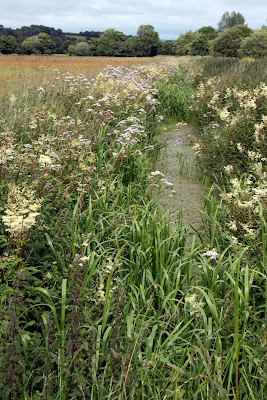THE north western corner of Scotland may not be a secret, but I was totally amazed by its unexpected beauty. Loch and lochans, huge imposing hills rising steeply like jagged teeth, open moorland and beaches that the Caribbean would be proud of - its could not have been nicer.
 |
| A working croft on the Assynt Estate, Sutherland |
As you might have guessed we recently took a weeks holiday there. We stayed in a former croft owned by a friend's family, only minutes from the coast, and surrounded by a rolling, rocky landscape...we had a ball. It was situated near Lochinver (in Sutherland), which is north of Ullapool, in an area designated as a Geopark.
The area has been crofted for many years and in 1993 was bought from the absent landlord by the local people - this is the Assynt Estate.
The area has been crofted for many years and in 1993 was bought from the absent landlord by the local people - this is the Assynt Estate.
Many houses and crofts stand alone amongst the hills. Almost all of the older crofts have been build right next to (or even abutting) the ruins of previous crofts, presumably lived in my the same family.
Much of the moorland is covered with heather, rough grasses, rushes, moss and rarer acid loving plants such as the heath spotted orchid (above), bog asphodel and sundews (below).
 |
| Lesser butterfly orchid |
The sea cliffs were packed with nesting birds - some accompanied balls of grey fluff in the form of chicks. The bird droppings paint the rock white and the fishy smell is quite intoxicating - its not wise to lean over the edge...
 |
| Birds nesting on the cliffs |
Another local beauty spot are the cliffs near the Old Man of Stoer - a sea stack. There is an impressive lighthouse and a van owned by a local woman doing great refreshments! It was from here and other cliff tops, that we spent some relaxing evenings (when it wasn't too cold) dolphin watching. I saw quite a few common dolphin pods and some harbour porpoises too. Practically all were too far out to get decent photos, although I do have a few pictures of black specks with fins. Gannets were also common.
 |
| Herring gull begging for my sandwich |
 |
| View of fishing boat moored in a quiet inlet |
 |
| A beach near where we stayed |
There are many ruined crofts in the area as a whole - this one had a particularly wonderful view. The only inhabitant now was a pair of nesting swallows. One of the adults can be seen flying out.
In pursuit of an otter one day, we had a really fabulous walk along Loch Glendhu. In spite of the copious seaweed fringe, which would have made perfect hunting habitat, there were no otters only great views. We were treated to a screaming fighter plane overhead and lots of biting things when the breeze was not blowing, plus a few seals and swooping terns.
This shrew was the only other mammal seen that day, not so exciting as an otter, but quite unusual to be able to catch it out of cover.
We paid a visit by boat to the romantically named Summer Isles too. On the way we spotted loads of common seals hauled up on the rocks, plus a few families of eiders ducks. We did not spot any male ducks strangely. The sun beat down on us that day and when the boat stopped we quickly took off our many layers to cool down again.
 |
| Heath spotted orchids on a Summer Isle |















































